by Fumitaka Nagamura [President, N.F. Farrd Systems Corp.]
IT HAS GENERALLY been believed that disc records with transmission inherently limited to two channels are not readily adaptable to multi-channel transmission of information, but it is due to the conception that the two transmission axes of discs are required to be independent of and unrelated to each other. To the contrary, full understanding of the two axes that are at right angles to each other leads to the possibility of discs serving as a medium capable of recording an infinite number of channels of information.
Additionally, as when recorded these channels form a circular and continuous spatial distribution, relative sequential positions of original sound sources remain unrelated in their recorded form.
Thus, it is meaningless to segregate discs by channels of information recorded thereon, such as two- and four-channel discs, and it is only the number of channels in reproducing equipment that places any limitation on the overall channel handling capability. Under this philosophy there is no basis for assigning the nomenclature "two-channel" to recordings of conventional front-only stereo, and "four-channel" to those of surround, or 360° stereo, as both such recordings can be reproduced in four or more channels by QDCS. However, for the sake of conformity with traditional nomenclatures, the former will be referred to simply as "stereo" in this article, and the latter as "quadraphonic" which is distinguished from four-channel reproduction of conventional stereo discs.
These aspects are not derived from any particularly new principle, as the 45/45 disc system itself has been founded on the same basis. Only, by limiting reproduction to two channels, discs have virtually been regarded exclusively as media for two mutually independent transmission channels, so that no more than half, i.e. 180°, of the fully circular, 360° continuously distributed recordings of information on discs, has been correctly reproducible, and the true merit of disc recordings has never been fully appreciated.
However, a gradually but steadily increasing revelation of the inherent capabilities of discs has been inevitable, and on the recording side, a glimpse of the truth appeared in an analysis of physical motions of disc cutter tips during RM (regular matrix) and other matrix recordings, but recognition of "discrete vectors" was never attained.
On the reproducing side, no such revelation has been made, and all reproduction has had to stay within the severe restriction of two-channel detection.
Only by breaking through the traditional two-axis detection (pick-up) concept, have new advancements in disc reproduction been made possible. It, at long last, provides a most direct method of reproducing from discs in multichannel, and marks the birth of a direct reproduction system in multichannel, comparable to the conventional reproduction in two channels.
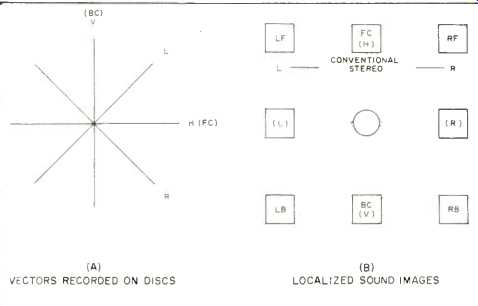
Fig. 11--Relationship between recorded vectors and localized sound images.
Reproduction of Original Sound
In this article, the original sound is defined as something frozen at the time when its record is cut, and it encompasses not only the natural sound field but also sound fields created exclusively in reproduction. Therefore, once recorded, the sound is considered to have been endowed with life as a piece of art, so that it is a mandatory requirement to avoid any unilateral distortion of signals picked up from discs, such as varying relative signal strengths and changing or shifting localization of sounds reproduced, even if such artificial processes happen to be free from any undesirable audio psychological effect.
Discs as Media Between Original and Reproduced Sound Fields
The ideally reproduced sound field should be a replica of the original sound field with no distortion and in the highest possible fidelity. Therefore, discs as media to connect the two fields must record and maintain balanced and correct information in a miniaturized form.
However, with regard to provision for directional localization of reproduced sound images, the conventional two-channel stereo system does not provide a balanced distribution and therefore may be termed irrational. To elaborate, while reproduced sound images can best be localized by magnitude ratios of their vector components detected along detection axes of pick-up cartridges, there always exist two vectors corresponding to any given magnitude ratio of outputs along the L and R axes of the two-channel cartridge. For instance, as shown in Fig. 11 (A), a vector equidistant from the L and R axes and in phase, denoted by H, invariably represents the front center, FC. However, there exists another vector, V, also equidistant from axes L and R, only in opposite phase.
This latter vector has been interpreted as a non-localized sound in reproduction, but if the listener is to be located in the center of a sound field as shown in Fig. 11 (B), and the reference point is at the front center, its conjugate point to the listener is at the rear center, and two positions always exist that are equidistant from the two reference points FC and BC. These represent positions straight to the sides, L and R. This observation embodies perfect symmetry without any duplication.
In other words, when considering the original sound field as a finite field confined within a concert hall, the center of the front left and right is the front center, and lines extended there--from in the rear direction along the hall walls in equal distances invariably meet in the rear center. In applying this situation to conventional stereo, a sound source moving from the front center to the rear center reverts to the front in reproduction, though becoming non-localized due to the phase relationship that gets reversed in the process. Nonetheless, sounds emanate from the front left and right speakers, which must be termed a self contradiction.
To eliminate the contradiction, symbols in Figs. 11 (A) and (B) may be shifted, preserving symmetry and balance, to positions denoted by corresponding symbols in ( ). Reproduction in two channels in this format would place the L and R speakers to the sides of the listener, and thus could not fulfill the original objective of front localization.
Despite the above contradiction, no serious inconveniences have thus far been experienced, but it is due to overemphasis placed in recording on front localization and no effort made to record side or rear localization. Besides, in actual practice, vectors recorded in stereo discs are concentrated heavily toward the horizontal axis, or the front center, rather than along the L and R axes.
Advances in recording technique, however, have tended toward recording applause and reverberations in opposite phase in order to express a live hall. This practice inadvertently managed to fulfill partially the foregoing symmetry of sound fields. It goes to prove that the 2-2-4 effect has not been purely accidental as has been generally believed.
The foregoing situation leads to the necessity of reviewing interrelations among microphone setting and mixing, disc cutting, and localization of sound images reproduced from stereo discs which are to be localized in front of the listener.
Fig. 12 (A) shows the case of a multi-microphone recording, and Fig. 12 (B) that of a two-microphone recording. As shown, there appears to be a difference in their localization patterns. In (A) sound localization is ideally recorded and cut into the disc, but when one considers the numerous musical instruments that are recorded, there is a limit to the expression of localization by only two speakers. In (B), on the other hand, recording and disc cutting reflect some ambiguity of localization caused by phase differences in sounds reaching the two microphones, but even with only two speakers, the phase differences contribute to a partial simulation of grandeur of a large concert hall.
Contemporary mixing is believed to have developed its phase controlling technique as a result of experiences in the foregoing two extreme cases. Our philosophy of symmetry and balance exemplified in QDCS shows, as explained below, that such experience-based approaches have progressed along the correct avenue.
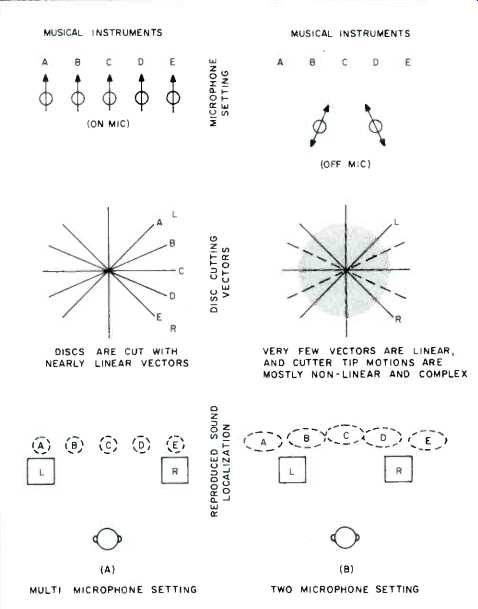
Fig. 12--Differences by microphone setting in recorded discs and reproduction.

Fig. 13--Four-channel reproduction of stereo discs by QDCS.
Firstly, four-direction detection and reproduction of signals recorded per Fig. 12 (A) make possible a more clear-cut localization, by virtue of the increased number of front speakers, as shown in Fig. 13 (A). Secondly, signals recorded per Fig. 12 (B) involve complicated phase relationships and cause cutter tip motions that cannot be expressed by linear vectors. As a result, vectors outside the L and R in-phase axes are cut on the disc, so that reproduction by a four-direction detection provides a sound field effect more satisfactory, as it is enhanced by the added rear speakers.
It should also be mentioned that even in multi-microphone recordings in studios, phase shifting and addition of echoes take place in practice, and that these artificial additives should basically provide compatible recordings to natural sound field recordings. Correlation of Fig. 11 (A) and (B), thus, falls in line with natural laws of physics.
However, deliberate recordings of rear localization still fall short of clearly distinguishing between the front and rear, as long as conventional two-channel cartridges are used, such as in matrix reproduction, as these are incapable of the distinction by means of the most important factor for localization, i.e. magnitude ratios of vector projections. This problem is overcome, as shown in Fig. 14 (B), by QDCS which detects one and only one ratio of vector projections for any one of the sound sources. No ambiguity of localization, therefore, ever takes place.
Thus analyzed, it follows that the natural approach to fulfill the law of balance and symmetry invariably contributes to more desirable advancements. Only, with discs, as long as conventional two-channel cartridges are used, the approach is not truly effective as their detection axes fail to follow the correct detection directions, even though signals are recorded on discs in perfect balance and symmetry. This is the background for the effectiveness of our four-direction detection.
As a result, QDCS eliminates all contradictions relative to localization, for all disc records, be they monaural, stereo, or quadraphonic, and systems and discs under QDCS possess complete compatibility, so that only one type of discs suffice to satisfy needs of all types of recording and reproduction.
Illustrated in Fig. 15 are interrelations among the foregoing classifications to facilitate understanding of the fact that all disc recordings are based on the same principle.
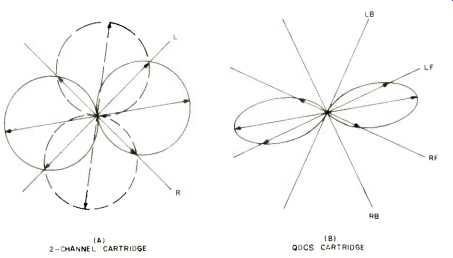
Fig. 14--Comparison of detected vectors by 2-channel vs. QDCS cartridges.
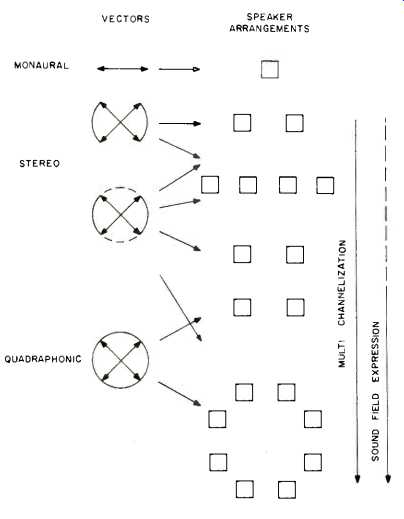
Fig. 15--Optimum speaker arrangements vs. historical flow of disc cutting
techniques.
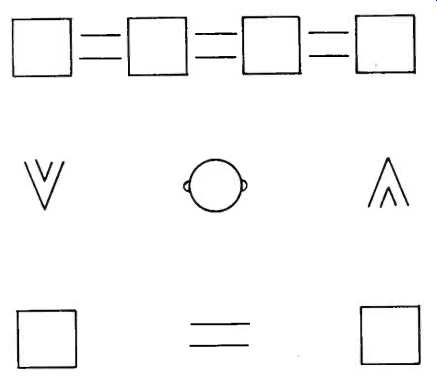
Fig. 16--Six-channel reproduction of stereo discs and phase relations.
Characteristics of QDCS Cartridges
QDCS cartridges developed in disregard for compatibility as component parts have features useful in certain specialized applications, in addition to the four-channel capabilities for which they were specifically designed. These features are unrealizable by conventional cartridges and may be summarized as follows:
(1) Monaural Playback of Quadraphonic Discs
By arranging for:
M = LF + RF-90° LB + 90° RB (1)
rear channels can be reproduced in phase with each other, eliminating any rear center losses, and therefore suitable for monaural broadcasting.
(2) Stereo Reproduction of Quadraphonic Discs
By arranging for:
L = LF-90° LB (2)
R = RF +90° RB
rear channels being in phase, no rear center losses take place even when monaurally receiving stereo broadcasts.
By (1) and (2) above, it is possible to avoid suppression of rear center sounds, necessitated in current matrixed discs for the sake of good monaural playback, as long as QDCS cartridges are used.
(3) Multichannel Reproduction of Stereo Discs
As shown in Fig. 13 (A), by placing four speakers in front and driving them in phase, localization of all sound sources can be correctly reproduced without duplication. Such a reproduction provides a more faithful and clear cut localization of sound images than is possible with the current two-channel system, and also a substantially broadened service area.
Furthermore, as shown in Fig. 16, by addition to the foregoing four front speakers of two rear channels outputting phase-shifted-90LB and +90 RB at adequate levels, a highly satisfactory ambience effect can be achieved.
(4) Multi-channelization
By combining signals from adjacent channels of the four detection channels, and by placing a speaker at a spatial location appropriate for the combined signal, indirect reproduction of channels existing in between becomes possible. Thus facilitated will be further multi-channelization by the use of playback matrices.
Reproduction Sound Fields by QDCS
Figures 17 (A), (B) and (C) show relationships between disc cutting vectors and reproduced sound localization when reproducing in eight channels. Signs in between channels denote phase relations between main signals (not necessarily overriding signals but those that should be correctly localized) and adjacent channel crosstalk, and those in between every other channel similar phase relations when reproducing in four channels. The complete symmetry of main and crosstalk signals is another manifestation of the inherent superiority of the QDCS system.
Also shown in Fig. 16. are the phase relations when the stereo disc of Fig. 12 (B) is reproduced in six channels. Reproduction such as this has not come about accidentally, but are realization of hitherto unrecognized basic properties of the disc record. Thus interpreted, it should be readily appreciated that QDCS has proven to be a rationalized and sophisticated form of the current stereo system.
Just as the 45/45 stereo system has been developed into a direct discrete system, so can this QDCS system be developed into a further stepped-up direct discrete system.
(To be continued)

Fig. 17--Phase relationships in QDCS system between primary signal and its
crosstalk.
---------------------
(adapted from Audio magazine, Feb. 1974)
Also see:
Compatible Quadra-Direction Discrete Stereo System--Part 1 (Jan. 1974)
Why You Should Buy Four-Channel Now (Jul. 1973)
The Evolution of Four-Channel Equipment (Jul. 1973)
Status: The CD-4 System (Jul. 1973)
Quadraphonic Headphones (Jun. 1973)
= = = =